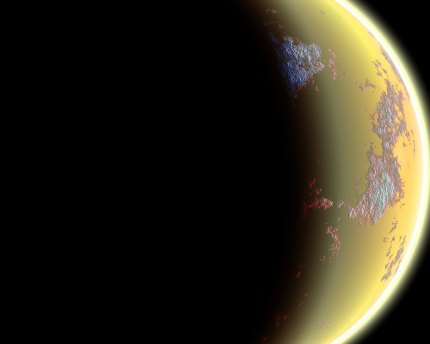
There may be a moon in orbit around a distant planet.
--Illustration.
This "exomoon candidate" orbits a planet in a solar system known as Kepler 1625, roughly 4,000 light years away. Columbia University researchers, along with a citizen scientist, wrote a paper on their work and have published it on an open-access website. Even so, they still must confirm the existence of the moon, and plan to use the Hubble Space Telescope before making findings.
There are 3,500 confirmed exoplanets and 582 multiplanet systems, according to NASA. But exomoons, if confirmed, may be the holy grail. Moons found around planets in our solar system are of great interest to researchers because they offer clues to the formation of planets. Additionally, Saturn and Jupiter both host moons thought to be promising targets in the search for life.
The study of exomoons might eventually upend current thinking on satellite formation. But exomoons are difficult to detect.
To understand, consider that planets migrate. By definition, planetary migration is "the decrease or increase in the orbital radius of a planet embedded in a protoplanetary disk due to interactions with the surrounding gas and/or solid material," according to the Encyclopedia of Astrobiology. "Migration occurs when a planetary body loses or gains orbital angular momentum due either to friction ... or to the imbalance of momentum transfer between the planetary body and the nearby disk material."
Some planets have moons in orbit. "The region of space around a satellite where a sub-satellite can exist is called the Hill sphere," according to the Cornell University website, Ask an Astronomer. "Outside the Hill sphere, a sub-satellite would be lost from its orbit about the satellite."
In the new study, Columbia researchers note that planets migrating inward tend to lose their moons in the process due to shrinking Hill sphere, while planets are more likely to retain moons orbiting closer to the host planet.
Researchers have searched for exoplanets using data from NASA's Kepler space observatory. Launched in 2009, the robotic spacecraft took images of stars, capturing planets as they transited in front of their host star, causing the star’s light to dim.
This new research is led by David Kipping of Columbia University along with Alex Teachey, a graduate student, and Allan R. Schmitt, a citizen scientist.
Related:
Scientists: 10 more planets could host life
Saturn’s moon has chemical needed for life
Jupiter’s moon may have balance for life
Surface shifts on Europa similar to Earth
Follow StudyHall.Rocks on Twitter.
If you would like to comment, give us a shout, or like us on Facebook and tell us what you think.